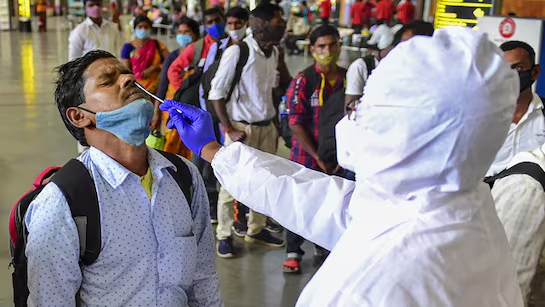Familiar Alarms

Owing to the fatal destruction and trauma it inflicted upon the entire humanity, COVID-19 has become a term synonymous to the macabre reality we experienced a couple of years back—an experience that is hard to erase from conscience, especially for those who saw their families and friend circles curtailed drastically, mercilessly, by the wrath of nature. With the best possible courage and conviction, humans rebuilt their lives, but every time COVID-19 cases surge, we find it hard to figure out how to respond to the potential resurgence of the grand threat. This is, in fact, the crux of the matter. Emergence of newer variants/sub-variants of Sars-Cov-2—as well as outbreak of other viral epidemics—was a well-articulated prophecy in the aftermath of the pandemic, especially given the increased chances of zoonotic spillovers in a world witnessing drastic climate change. Humans had to adapt to the idea that COVID-19, or similar outbreaks, are not a passing fad. They had to figure out a way to live alongside fast mutating viruses in their vicinity. Unfortunately, the world has failed to gauge the continuous nature of extreme viral threats—leaving an open-ended scope for graver risks.
With active cases in India rising to 257 as of May 19, the highest in the past year, the alert has been sounded, though not with panic. Most cases remain mild, and authorities have assured the public that the situation is under control. But the real question is—are we, as a society, still prepared? India’s numbers are minuscule in the context of its population, and they pale in comparison to the spikes being seen in parts of Asia like Singapore and Hong Kong. There, the JN.1 variant and its sub-lineages LF.7 and NB.1.8 are reportedly driving the surge. Although India hasn’t officially confirmed the presence of these variants, the genetic trail is not hard to trace. JN.1, a descendant of the Omicron BA.2.86 lineage, carries roughly 30 mutations—enough to evade immunity and spread with greater ease, as per Johns Hopkins and Yale Medicine.
The steady increase in cases in Kerala, Maharashtra, and Tamil Nadu—states that bore the brunt of earlier waves as well—is indeed a sobering indicator of what could potentially be in the offing. Maharashtra, which reported two recent COVID-positive deaths, has clarified that the deaths were not linked to the virus, but are rather a result of other serious comorbidities. Even in such cases, the presence of COVID symptoms must be clearly recorded. Furthermore, certain news reports have also put a spotlight on Mumbai’s largely unprepared public health infrastructure. The outcomes of lapses like such under preparedness are known to the world. It is high time to avoid those. If cases were to surge again, these deficiencies could tip a manageable situation into chaos.
Thankfully, the official response so far has been cautious but proactive. A high-level review meeting chaired by the Director General of Health Services brought together key bodies like the Indian Council of Medical Research and the National Centre for Disease Control. Their message was measured: the situation is under control, but surveillance and preparedness are being ramped up. The Brihanmumbai Municipal Corporation (BMC), too, has promised swift response and resource mobilisation if cases rise further. Globally, the reappearance of COVID-19 waves—especially in highly urbanised, well-vaccinated societies like Singapore and Hong Kong—should remind us that the virus is now endemic. Importantly, the World Health Organisation’s endorsement of a global pandemic agreement is a welcome development. With 124 countries backing it, this initiative is designed to address the very shortcomings—like vaccine inequity and response delays—that marred the early months of the COVID-19 pandemic. It signals a collective will to be better prepared next time. In India’s case, the larger threat today is the danger of complacency. Public messaging must continue to encourage booster doses, good hygiene, masking in crowded places, and transparency in reporting. Precaution, like always, will be the key.



